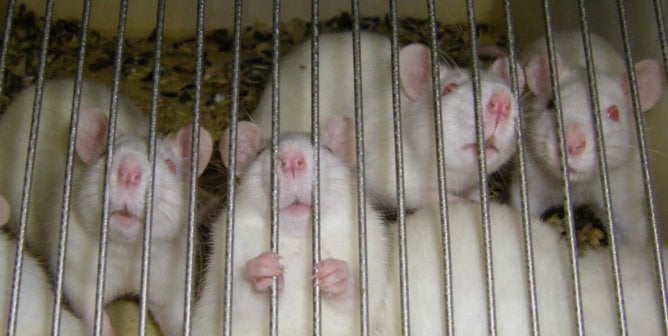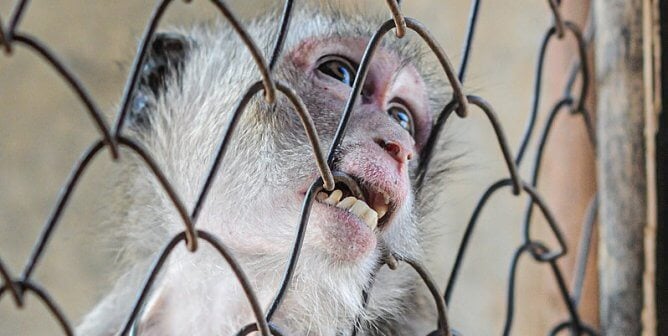Government-Required Animal Testing: An Overview
Government regulations in many countries require toxicity testing on animals as a condition for the importation or sale of pesticides, industrial chemicals, drugs, medical devices, vaccines, genetically modified foods, and some consumer products. Depending on the product type, its likely toxicity, and the degree of anticipated human or environmental exposure, tests using hundreds or thousands of animals may be required by law. In these tests, animals—including birds, dogs, mice, rabbits, and rats—are forced to swallow or inhale a test substance or a chemical is applied to their skin or eyes.
Animal Numbers
It’s not possible to know the exact number of animals used in tests because most countries don’t keep detailed public records of these numbers or the type of tests animals are used in. However, studies estimate that approximately 190 million to 275 million animals are used for scientific purposes worldwide each year,1,2 and a fraction of those are used in government-required regulatory testing.
Scientific Validity
Most animal tests in use today have never been scientifically validated according to internationally agreed-upon criteria in order to demonstrate that they are predictive of human health outcomes or environmental hazards. The reliability, accuracy, and relevance of their results are always questionable and subject to vastly differing interpretations, as explained here.
Recognition of the scientific limitations—as well as the cost, inefficacy, and ethical issues—of testing on animals has led to significant interest within the scientific community in implementing animal-free test methods. The 2007 landmark report Toxicity Testing in the 21st Century by the National Research Council of the National Academies presented a strategy for moving away from testing on animals and toward human-relevant, non-animal testing approaches. Dr. Melvin Andersen, coauthor of the report and former director of the Division of Computational Biology at The Hamner Institutes for Health Sciences, stated, “The reason we use animal tests is because we have a comfort level with the process … not because it is the correct process, not because it gives us any real new information we need to make decisions. Animal tests are no longer the gold standard.”3 The former head of the European Centre for the Validation of Alternative Methods, Dr. Thomas Hartung, echoed Dr. Andersen’s statement when he said, “Some animal tests haven’t changed in 60 years. The tests are frozen in time. This is not science. Science is always moving ahead.”4
Animal and Non-Animal Tests
Regulatory agencies often require information about a chemical’s ability to cause the adverse effects listed below. These tests have historically been conducted on animals, but PETA scientists are collaborating with other cutting-edge scientists and regulators to instead implement more reliable non-animal test methods that will better protect humans and our environment. Read more about the animal and non-animal tests at each link below.
- Acute Systemic Toxicity
- Carcinogenicity
- Eye Irritation and Corrosion
- Genotoxicity
- Phototoxicity
- Pyrogenicity
- Skin Absorption
- Skin Irritation and Corrosion
- Skin Sensitization
The Way Forward
PETA is persuading world governments, both individually and as part of international organizations such as the Organisation for Economic Co-operation and Development, to become more involved in developing and using sophisticated animal-free test methods.
Where non-animal methods are not yet available or fully validated, PETA funds—and encourages others to provide funding for—the development and validation of such test methods. PETA entities worldwide have provided millions of dollars in funding for promising non-animal test methods. More information on the ways in which PETA is helping to promote, develop, and validate non-animal testing methods can be found here.
References
1Taylor K, Rego Alvarez L. An estimate of the number of animals used for scientific purposes worldwide in 2015. Altern Lab Anim. 2019;47(5-6):196-213. doi:10.1177/0261192919899853
2Carbone L. Estimating mouse and rat use in American laboratories by extrapolation from Animal Welfare Act–regulated species. Sci Rep. 2021;11(1):1-6. doi:10.1038/s41598-020-79961-0
3Gaul GM. In U.S., Few Alternatives to Testing on Animals. The Washington Post. April 12, 2008.
4Ibid.








